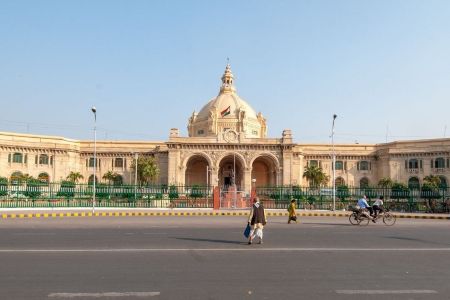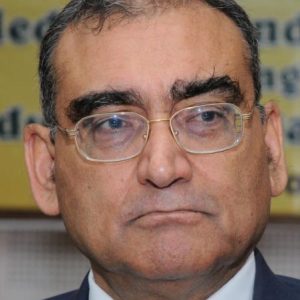Debating Linguistic Identity: Myths, Misconceptions, and Political Agendas in Uttar Pradesh
RECENTLY, THE SPEAKER 0f the UP Legislative Assembly announced that members of the House could also speak in four additional regional languages (apart from Hindi): Avadhi, Bhojpuri, Braj Bhasha, and Bundelkhandi.
Members of the Opposition Samajwadi Party (SP) objected to the non-inclusion of Urdu as a language that could be used in the House. This only reflects their ignorance and the fact that such an objection was made solely with an eye on the Muslim vote bank—based on the misconception that Urdu is the language of Muslims.
The language spoken in the House (and by the common man, whether Hindu or Muslim, in many Indian states, including UP) is simple Hindi, which is also called Hindustani or Khadiboli. This is also the language spoken by many Pakistanis.
 Simple Hindi (Hindustani) and simple Urdu are almost identical. What determines the language to which a sentence belongs is the verb usage, not the nouns or adjectives.
Simple Hindi (Hindustani) and simple Urdu are almost identical. What determines the language to which a sentence belongs is the verb usage, not the nouns or adjectives.
In Hindi and Urdu, the verbs are identical. Even in Urdu poetry, which is sometimes highly Persianized (e.g., the poetry of Ghalib), the verbs are in Hindustani or simple Hindi, while many nouns and adjectives are borrowed from Persian.
For instance, Ghalib writes:
“Dekho mujhe jo deeda-e-ibrat nigaah ho
Meri suno jo gosh-e-naseehat niyosh hai”
Here, the verbs “dekho,” “suno,” and “hai” are all in Hindustani, while many nouns and adjectives come from Persian. Similarly, in the verses of any Urdu poet, we find that all the verbs are in Hindustani. If the verbs were in Persian, it would be Persian poetry; if they were in Arabic, it would be Arabic poetry.
Though Urdu is used in poetry, it is not spoken by Muslims in India or Pakistan in everyday life. Instead, they speak Hindustani, which is also spoken by Hindus. While Pakistanis refer to their language as Urdu, what they actually speak is Hindustani. I converse in Hindustani with many Pakistanis on WhatsApp.

UP Vidhan Sabha
Thus, the demand to include Urdu among the languages permitted in the UP Legislative Assembly is superfluous and redundant, based on a total misconception. In its simplified form as Hindustani, it is already a language of the House—in fact, the most commonly spoken one.
Regarding the remarks of UP Chief Minister Yogi Adityanath that knowledge of Urdu makes one a maulvi or kathmulla (Muslim bigot), these comments were both unfortunate and fallacious.
Urdu is a completely secular language. Until 1947, it was the language of all educated people—Hindus, Muslims, Sikhs, etc.—not of Muslims alone. In my own family, up to my father’s generation, everyone was highly proficient in Urdu. Former Indian Prime Minister Manmohan Singh once told me that he wrote all his speeches in Urdu.
The idea that Urdu is the language of Muslims alone, while Hindi is the language of Hindus, was a product of the British divide-and-rule policy, propagated by British agents like Bhartendu Harishchandra.
Moreover, Urdu is not a foreign language like Persian or Arabic, as I have explained elsewhere.
Thus, the statements of both the Chief Minister and the Opposition leaders stem from total misconceptions about Urdu, revealing their ignorance of a great language that has suffered great injustice in India. ![]()
Also Read: Manipur in Crisis: Biren’s Exit and Road Ahead
Disclaimer : PunjabTodayNews.com and other platforms of the Punjab Today group strive to include views and opinions from across the entire spectrum, but by no means do we agree with everything we publish. Our efforts and editorial choices consistently underscore our authors’ right to the freedom of speech. However, it should be clear to all readers that individual authors are responsible for the information, ideas or opinions in their articles, and very often, these do not reflect the views of PunjabTodayNews.com or other platforms of the group. Punjab Today does not assume any responsibility or liability for the views of authors whose work appears here.
Punjab Today believes in serious, engaging, narrative journalism at a time when mainstream media houses seem to have given up on long-form writing and news television has blurred or altogether erased the lines between news and slapstick entertainment. We at Punjab Today believe that readers such as yourself appreciate cerebral journalism, and would like you to hold us against the best international industry standards. Brickbats are welcome even more than bouquets, though an occasional pat on the back is always encouraging. Good journalism can be a lifeline in these uncertain times worldwide. You can support us in myriad ways. To begin with, by spreading word about us and forwarding this reportage. Stay engaged.
— Team PT

